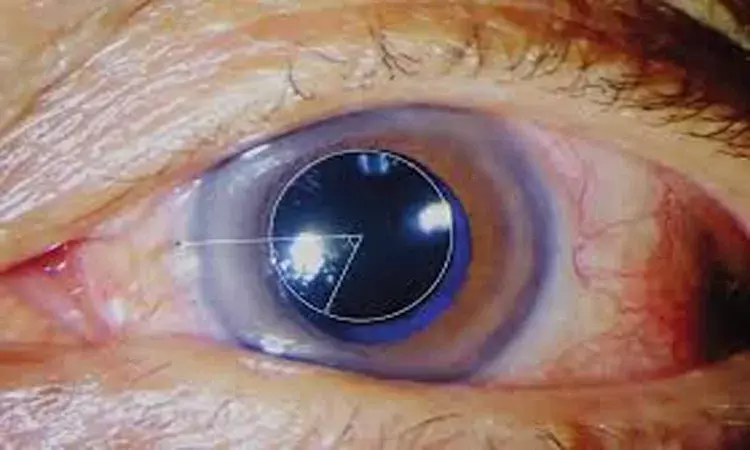- Home
- Medical news & Guidelines
- Anesthesiology
- Cardiology and CTVS
- Critical Care
- Dentistry
- Dermatology
- Diabetes and Endocrinology
- ENT
- Gastroenterology
- Medicine
- Nephrology
- Neurology
- Obstretics-Gynaecology
- Oncology
- Ophthalmology
- Orthopaedics
- Pediatrics-Neonatology
- Psychiatry
- Pulmonology
- Radiology
- Surgery
- Urology
- Laboratory Medicine
- Diet
- Nursing
- Paramedical
- Physiotherapy
- Health news
- Fact Check
- Bone Health Fact Check
- Brain Health Fact Check
- Cancer Related Fact Check
- Child Care Fact Check
- Dental and oral health fact check
- Diabetes and metabolic health fact check
- Diet and Nutrition Fact Check
- Eye and ENT Care Fact Check
- Fitness fact check
- Gut health fact check
- Heart health fact check
- Kidney health fact check
- Medical education fact check
- Men's health fact check
- Respiratory fact check
- Skin and hair care fact check
- Vaccine and Immunization fact check
- Women's health fact check
- AYUSH
- State News
- Andaman and Nicobar Islands
- Andhra Pradesh
- Arunachal Pradesh
- Assam
- Bihar
- Chandigarh
- Chattisgarh
- Dadra and Nagar Haveli
- Daman and Diu
- Delhi
- Goa
- Gujarat
- Haryana
- Himachal Pradesh
- Jammu & Kashmir
- Jharkhand
- Karnataka
- Kerala
- Ladakh
- Lakshadweep
- Madhya Pradesh
- Maharashtra
- Manipur
- Meghalaya
- Mizoram
- Nagaland
- Odisha
- Puducherry
- Punjab
- Rajasthan
- Sikkim
- Tamil Nadu
- Telangana
- Tripura
- Uttar Pradesh
- Uttrakhand
- West Bengal
- Medical Education
- Industry
Highly aspherical Lenslets help arrest myopia progression: JAMA

Highly aspherical lenslets (HAL) and slightly aspherical lenslets (SAL) both lowered the rate of myopia development and axial elongation during a two-year period, with HAL being more effective, says an article published in the Journal of American Medical Association - Ophthalmology.
Reducing the advancement of myopia can lower the risk of related ocular illnesses. As a result, Jinhua Bao and colleagues undertook this investigation to determine if spectacle lenses with higher lenslet asphericity had a higher myopia control efficacy over a two-year period.
This randomized double-masked clinical experiment was done at Wenzhou Medical University's Eye Hospital in Wenzhou, China, between July 2018 and October 2020. Children aged 8 to 13 years old with cycloplegic spherical equivalent refraction (SER) ranging from 0.75 D to 4.75 D and astigmatism less than 1.50 D were recruited. In 2019, a data and safety monitoring group analyzed findings from an upcoming interim analysis. Participants were allocated to receive spectacle lenses with HAL, spectacle lenses with mildly aspherical lenslets, or single-vision spectacle lenses in a 1:1:1 ratio (SVL).
The key findings of this study were as follow:
1. In the HAL group, 54 of the 157 individuals who finished each visit were examined, 50 in the SVL group and 53 in the SAL group.
2. In the SVL group, the mean (SE) 2-year myopia progression was 1.46 (0.09) D.
3. In comparison to SVL, the mean (SE) change in SER for HAL was lower.
4. For SVL, the mean (SE) increase in axial length was 0.69 (0.04) mm.
5. In comparison to SVL, the growth in axial length for HAL was delayed by a mean (SE) of 0.35 (0.05) mm and 0.18 (0.05) mm for SAL.
6. When compared to SVL, the mean (SE) change in SER for children who wore HAL at least 12 hours per day was slowed by 0.99 (0.12) D, and the rise in axial length was slowed by 0.41 (0.05) mm.
In conclusion, when compared to SAL and SVL, wearing HAL dramatically reduced the rate of myopia progression and eye development in children with myopia over 2 years. This study found a dose-dependent impact, with increased lenslet asphericity resulting in better myopia control effectiveness.
Reference:
Bao J, Huang Y, Li X, et al. Spectacle Lenses With Aspherical Lenslets for Myopia Control vs Single-Vision Spectacle Lenses: A Randomized Clinical Trial. JAMA Ophthalmol. Published online March 31, 2022. doi:10.1001/jamaophthalmol.2022.0401
Keywords: ophthalmology, lens, eye, myopia, aspherical lenslet, refraction, spectacle, axial elongation, vision, corrective error, ocular illness, JAMA
Medical Dialogues consists of a team of passionate medical/scientific writers, led by doctors and healthcare researchers. Our team efforts to bring you updated and timely news about the important happenings of the medical and healthcare sector. Our editorial team can be reached at editorial@medicaldialogues.in.
Dr Kamal Kant Kohli-MBBS, DTCD- a chest specialist with more than 30 years of practice and a flair for writing clinical articles, Dr Kamal Kant Kohli joined Medical Dialogues as a Chief Editor of Medical News. Besides writing articles, as an editor, he proofreads and verifies all the medical content published on Medical Dialogues including those coming from journals, studies,medical conferences,guidelines etc. Email: drkohli@medicaldialogues.in. Contact no. 011-43720751


